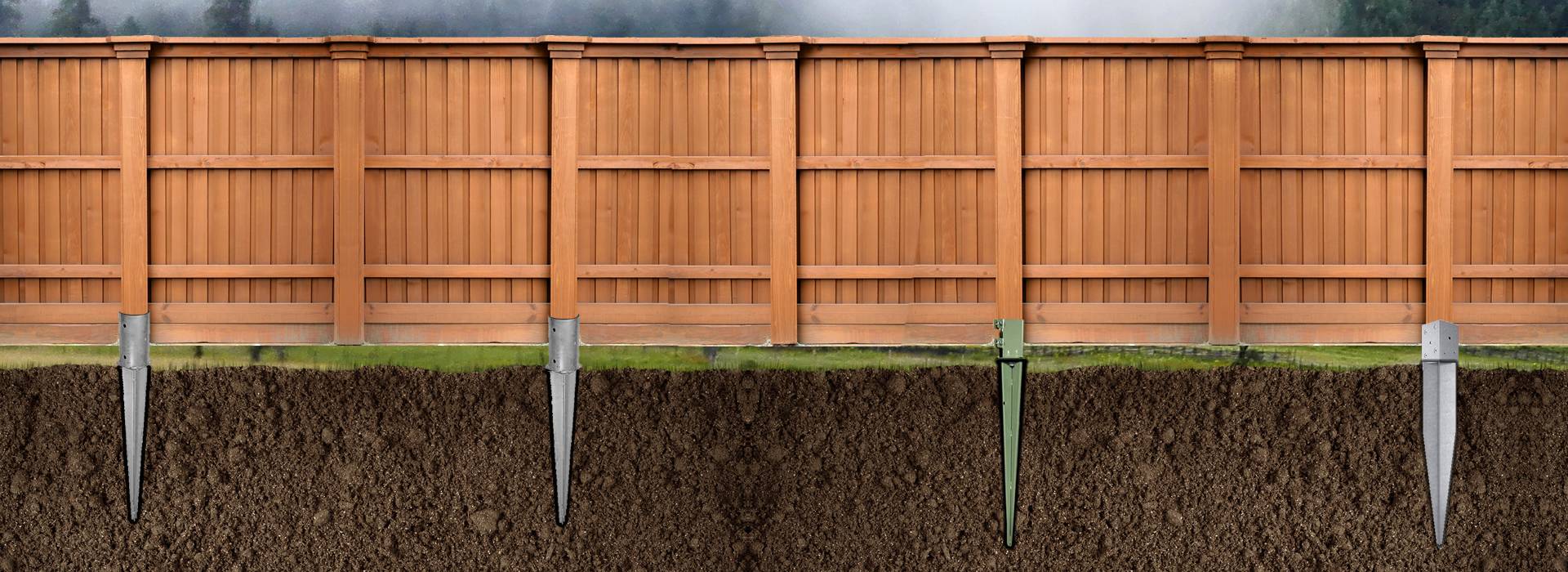Are you thinking about installing a fence but unsure about which fence post anchors to choose? Don’t worry, I’ve got you covered! In this article, I’ll provide you with some valuable tips for selecting the right fence post anchors. Whether you’re a DIY enthusiast or a professional fence installer, these tips will help you make an informed decision and ensure that your fence is sturdy and long-lasting.
When it comes to choosing fence post anchors, there are a few factors you need to consider. First and foremost, you need to think about the type of fence you’re installing. Are you building a wooden fence, a chain-link fence, or a vinyl fence? Each type of fence requires different types of post anchors, so it’s important to understand the specific needs of your project. Additionally, you should consider the soil conditions in your area. If you have soft, sandy soil, you may need to opt for a different anchor type than if you have rocky or clay soil. By taking these factors into account, you can choose post anchors that are best suited for your specific fence project.
In the upcoming article, I’ll delve deeper into these tips and provide you with more detailed information about each factor to consider when choosing fence post anchors. Whether you’re looking for information on different anchor types, how to properly install them, or how to ensure they are secure and durable, my article will answer all your questions. Stay tuned to learn more about choosing the right fence post anchors for your project.
Tips for Choosing the Right Fence Post Anchors
When it comes to installing a fence, choosing the right post anchors is crucial for ensuring stability, durability, and overall security. With various types of fence post anchors available, as well as factors to consider such as soil type, weather conditions, and installation difficulty, it can be overwhelming to make the right choice. In this article, we will discuss the different types of fence post anchors, factors to consider before choosing them, the importance of selecting the right ones, and various tips and maintenance guidelines to ensure their longevity. We will also explore different fence materials, their benefits and drawbacks, and how to go about choosing the right fence material for your specific needs.
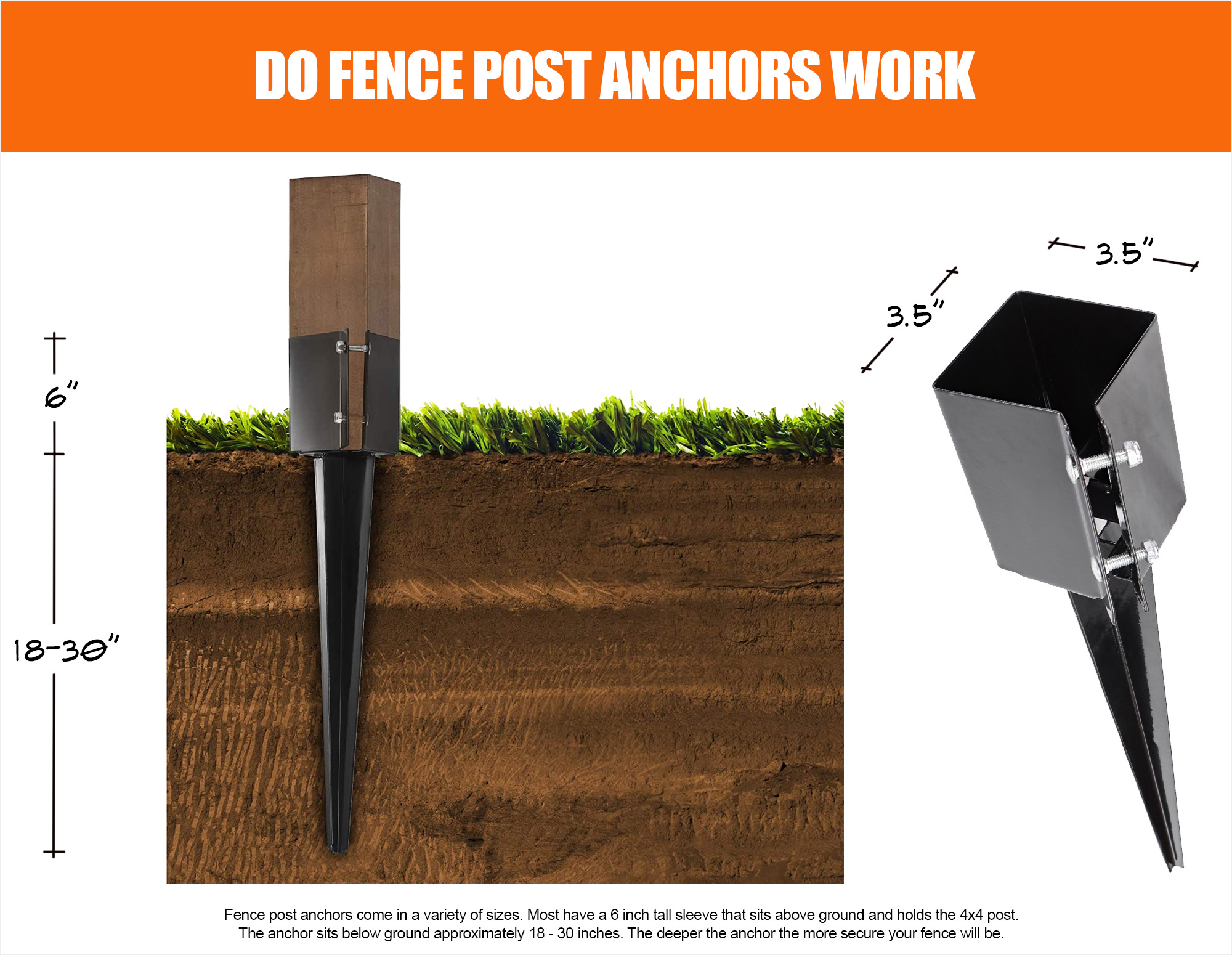
Types of Fence Post Anchors
Concrete Post Anchors
Concrete post anchors are a common and popular choice for fence installations. They provide excellent stability and durability, making them suitable for a variety of fence materials. Concrete post anchors can be in the form of poured concrete footings, precast concrete post anchors, or surface-mounted brackets for attaching posts to concrete surfaces. They are known for their strength and long-lasting performance.
Metal Post Anchors
Metal post anchors, such as steel or galvanized steel, are another reliable option for securing fence posts. These anchors are designed to be strong and resistant to rust and corrosion, making them suitable for various climate conditions. Metal post anchors can be in the form of spikes that are driven into the ground, U-shaped brackets that are bolted to the posts, or adjustable metal brackets that allow for leveling the posts.
Wooden Post Anchors
Wooden post anchors are commonly used for supporting wooden fences. They are usually made of treated wood or pressure-treated lumber to resist rot, decay, and insect damage. Wooden post anchors can come in the form of post sleeves that are inserted into the ground, post brackets that are screwed or bolted to the posts, or post caps that sit on top of the posts. These anchors provide a sturdy base for wooden fence posts and can enhance the overall aesthetic appeal of the fence.
Factors to Consider Before Choosing Fence Post Anchors
Before selecting fence post anchors, several factors should be taken into consideration to ensure a successful and long-lasting installation. These factors include:
Soil Type
The type of soil in your location plays a crucial role in determining the stability of your fence post anchors. If you have sandy or clay soil, it may not provide enough support for certain types of anchors. In such cases, you may need to consider using additional reinforcement methods, such as pouring concrete footings, using deeper post anchors, or using specialized anchors designed for problematic soils.
Fence Material
Different fence materials have different requirements and may require specific types of post anchors. For instance, wooden fences may require anchors that can withstand the weight and pressure of the wood, while metal or vinyl fences might require anchors that can be securely attached to their respective materials. It is essential to choose anchors that are compatible with the specific fence material you are using.
Weather Conditions
Weather conditions, including wind, rain, snow, and extreme temperatures, can affect the stability and durability of your fence. If you live in an area prone to high winds or heavy precipitation, you may need to select post anchors that can withstand these conditions. Metal anchors are often recommended for areas with strong winds, while concrete anchors are suitable for areas with heavy snowfall.
Installation Difficulty
Consider your level of expertise and the tools you have available for installing fence post anchors. Some anchor types may require specialized knowledge or equipment to ensure proper installation. If you are a DIY enthusiast, you may want to choose anchors that are relatively easy to install for a successful and hassle-free fence installation.
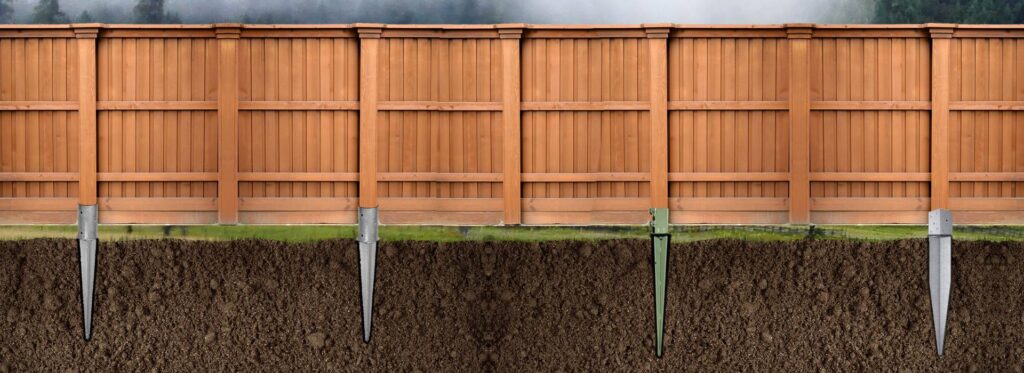
Importance of Choosing the Right Fence Post Anchors
Choosing the right fence post anchors is of utmost importance for several reasons:
Ensures Stability and Durability
Using the appropriate post anchors ensures that your fence remains stable and withstands various external forces. Properly anchored posts prevent the fence from leaning, sagging, or shifting over time, ensuring its structural integrity and overall longevity.
Prevents Sagging and Shifting
Improperly anchored posts can cause your fence to sag or shift, compromising its functionality and aesthetics. Sagging fences not only affect the overall appearance but may also result in gaps between posts and sections, decreasing privacy and security.
Enhanced Security and Privacy
By choosing the right post anchors, you can ensure that your fence provides adequate security and privacy. Well-anchored fences are less likely to be easily breached, providing a safer and more secure boundary for your property.
Different Types of Fence Materials
Before delving deeper into choosing the right fence post anchors, it is essential to understand the different types of fence materials available. Each material has its own unique characteristics, benefits, and drawbacks:
Wooden Fences
Wooden fences are a classic and versatile choice for many homeowners. They can be customized to various styles and designs, providing a natural and warm appearance to any property. Wooden fences require regular maintenance, including staining, sealing, and occasional repairs to prevent rot and decay over time.
Chain-link Fences
Chain-link fences are known for their affordability and durability. They consist of interwoven galvanized steel wires, forming a mesh pattern. While chain-link fences may not offer much privacy, they provide good security and are suitable for marking boundaries or preventing unwanted visitors.
Vinyl Fences
Vinyl fences are gaining popularity due to their low-maintenance nature and wide range of design options. They are made of polyvinyl chloride (PVC) and are resistant to rot, insects, and fading. Vinyl fences are available in various colors and styles, offering both privacy and a clean, modern appearance.
Wrought Iron Fences
Wrought iron fences are known for their timeless beauty and elegance. They are made of iron that is heated, hammered, and bent into decorative shapes. Wrought iron fences require regular maintenance, including repainting to prevent rusting. They provide high security and privacy, making them suitable for residential and commercial properties.

Benefits and Drawbacks of Different Types of Fence Materials
Each fence material comes with its own set of benefits and drawbacks. Understanding these can help you make an informed decision based on your specific needs and preferences:
Wooden Fences: Natural Appearance and Maintenance Requirements
Wooden fences provide a natural and aesthetically pleasing appearance to any property. They can be stained or painted to match the overall theme of your home. However, wooden fences require regular maintenance, including staining or sealing every few years, to prevent rot, decay, and insect damage.
Chain-link Fences: Affordability and Limited Privacy
Chain-link fences are among the most affordable fence options available. They are durable, require minimal maintenance, and can withstand harsh weather conditions. However, chain-link fences offer limited privacy and may not be the preferred choice for homeowners seeking to create a more private outdoor space.
Vinyl Fences: Low Maintenance and Limited Design Options
Vinyl fences are an excellent choice for those seeking a low-maintenance and long-lasting option. They are resistant to rot, insects, and fading, eliminating the need for regular maintenance. However, vinyl fences offer limited design options compared to other materials and are generally more expensive.
Wrought Iron Fences: Classic Look and Higher Cost
Wrought iron fences provide an elegant and classic look that can enhance the beauty of any property. They offer high security and durability but require regular maintenance, including repainting to prevent rust. Wrought iron fences tend to be more expensive compared to other materials.
How to Choose the Right Fence Material
Choosing the right fence material depends on several factors, including the purpose, style, aesthetics, and budget. Consider the following when deciding on the best fence material for your needs:
Purpose and Function
Determine the primary purpose of installing the fence. Is it for security, privacy, aesthetic enhancement, or defining property boundaries? Each material offers different levels of security, privacy, and visual appeal.
Style and Aesthetics
Consider the architectural style of your property and how the fence will blend with it. Different materials complement different architectural styles, so choose a material that harmonizes with the overall aesthetics of your home.
Budget and Lifetime Costs
Evaluate your budget and the lifetime costs associated with each fence material. While some materials may be more affordable initially, they may require more maintenance or have a shorter lifespan. Take into account the long-term costs of maintenance, repairs, and replacement.
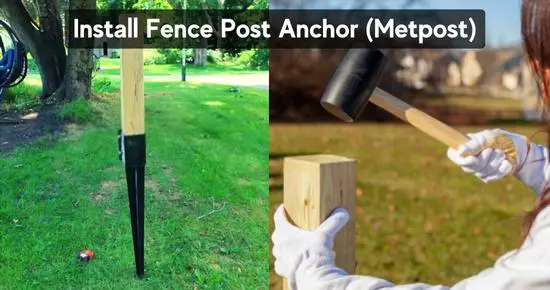
Common Issues with Fence Post Anchors
Even with the right fence post anchors, certain issues may arise over time. Being aware of these common problems can help you address them promptly:
Rotting and Decay
Wooden post anchors are prone to rot and decay, especially when exposed to moisture and the elements. Regular inspections and proper maintenance can help prevent this issue. If rotting occurs, prompt replacement or repair is necessary to ensure the stability of the fence.
Loose or Unstable Anchors
Over time, fence post anchors may become loose or unstable, compromising the stability of the fence. Periodic inspections and immediate tightening or reinforcement can help address this issue before it escalates.
Inadequate Stability in Different Soils
Different types of soil pose different challenges when it comes to the stability of fence post anchors. Sandy soil, for example, may not provide enough support, while clay soil may cause anchors to shift. In these cases, additional measures such as using deeper anchors or concrete footings can provide the necessary stability.
Tips for Proper Installation of Fence Post Anchors
To ensure the proper installation of fence post anchors, keep the following tips in mind:
Choosing the Right Anchor Size
Select an anchor size and type that is appropriate for the weight and intended use of the fence. Consult the manufacturer’s guidelines or seek professional advice if you are unsure of the correct size.
Proper Placement and Spacing
Plan the placement and spacing of your fence posts and anchors carefully. Consider the length and height of your fence, local regulations, and the specific requirements of the post anchors. Proper spacing and alignment contribute to the stability and overall appearance of the fence.
Secure Attachment to Fence Posts
Ensure that the post anchors are securely attached to the fence posts. Use appropriate hardware, such as bolts or screws, and follow the manufacturer’s instructions for proper attachment. This will prevent any movement or shifting of the fence posts.
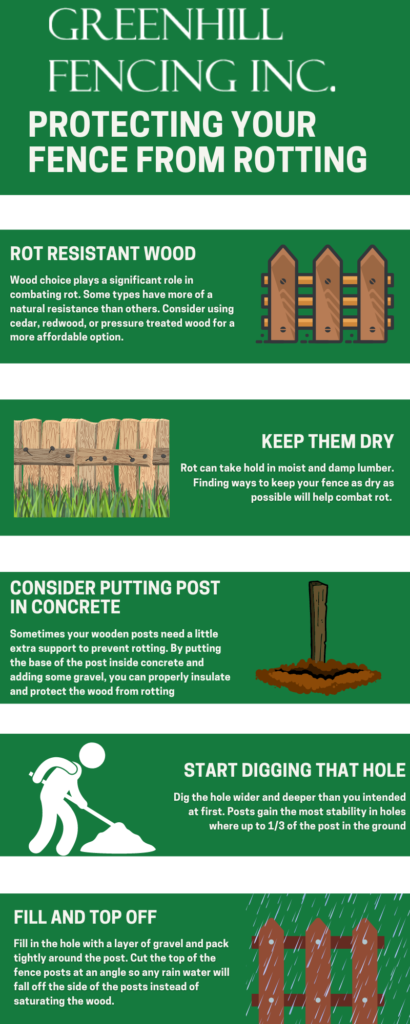
Maintenance and Care for Fence Post Anchors
Regular maintenance and care for fence post anchors are essential to ensure their longevity and reliability. Follow these guidelines to keep your fence post anchors in optimal condition:
Regular Inspections and Repairs
Frequently inspect your fence post anchors for any signs of damage, decay, or looseness. Promptly address any issues to prevent further damage or instability. Replace or reinforce any damaged anchors as needed.
Cleaning and Treatment
Clean your fence post anchors periodically to remove dirt, debris, and rust buildup. Use a stiff brush, mild detergent, and water to scrub away any residue. If your anchors are made of metal, apply a rust-resistant treatment or paint to prevent corrosion.
Preventing Rust and Corrosion
If your fence post anchors are made of metal, take steps to prevent rust and corrosion. Applying a layer of protective paint or rust-resistant coating can significantly extend their lifespan. Additionally, avoid exposing metal anchors to excessive moisture by ensuring proper drainage around the fence posts.
Comparing Different Brands and Manufacturers of Fence Post Anchors
When choosing fence post anchors, it is essential to compare different brands and manufacturers. Consider the following factors:
Quality and Durability
Research the reputation and track record of different brands to ensure you are investing in high-quality and durable fence post anchors. Reading customer reviews and seeking recommendations can provide valuable insights into the performance and reliability of various brands.
Price and Warranty
Compare the prices and warranty options offered by different manufacturers. While it is important to consider your budget, remember that inexpensive options may compromise on quality. Balance the cost with the expected lifespan and performance of the anchors.
Customer Reviews and Ratings
Check online customer reviews and ratings for different fence post anchor brands. Feedback from other homeowners who have used the products can provide valuable information about their performance, ease of installation, and overall satisfaction.
Understanding Local Regulations and Permits for Fence Post Anchors
Before installing a fence, it is crucial to understand and comply with local regulations and permit requirements. Consider the following aspects:
Height and Design Restrictions
Many municipalities have regulations in place regarding the height and design of fences. Ensure your proposed fence complies with these regulations to avoid any fines or issues with local authorities.
Boundary and Property Line Issues
Understanding your property boundaries and collaborating with your neighbors is vital when installing a fence. Discuss your plans with nearby property owners to prevent any conflicts or misunderstandings.
Permit Application Process
Check with your local building department regarding permit requirements for fence installations. Some areas may require permits, especially for fences exceeding a certain height. Make sure to obtain the necessary permits before starting the installation process.
Cost Analysis of Fence Post Anchors and Installation
When considering the cost of fence post anchors and installation, several factors come into play:
Material and Labor Costs
The cost of the fence post anchors themselves can vary depending on the type, material, and brand. Additionally, labor costs for professional installation, if required, need to be factored in. Obtain quotes from multiple contractors to compare prices and choose the best option for your budget.
Cost Comparison with Traditional Post Installation
Compare the costs of using fence post anchors versus traditional post installation methods such as digging holes and pouring concrete footings. While traditional methods may have lower material costs, they often require more labor and time-intensive installation processes.
Tips for Hiring a Professional Fence Installer
If you decide to hire a professional fence installer, consider the following tips:
Research and Get Multiple Quotes
Research reputable fence contractors in your area and obtain multiple quotes for comparison. Look for contractors with positive reviews, proper licensing, and experience in installing the fence material of your choice.
Check References and Reviews
Ask for references from previous clients and follow up with them to inquire about their experience with the fence installer. Read online reviews and ratings to gain further insight into their reputation and workmanship.
Verify Insurance and Licensing
Ensure that the fence installer you hire has the necessary licenses, permits, and insurance coverage. This protects you from liability in case of accidents or damages during the installation process.
Conclusion
Choosing the right fence post anchors is essential for the stability, durability, and security of your fence. Consider factors such as soil type, fence material, weather conditions, and installation difficulty before making a decision. Each fence material has its own benefits and drawbacks, so choose one that aligns with your specific needs, style preferences, and budget. Regular maintenance and care for fence post anchors are important for their longevity and performance. Compare different brands and manufacturers, consider local regulations and permits, and analyze the cost of fence post anchors and installation before starting your project. Whether you decide to hire a professional or take on the installation yourself, following these tips will help you make an informed decision and ensure a successful fence installation.
